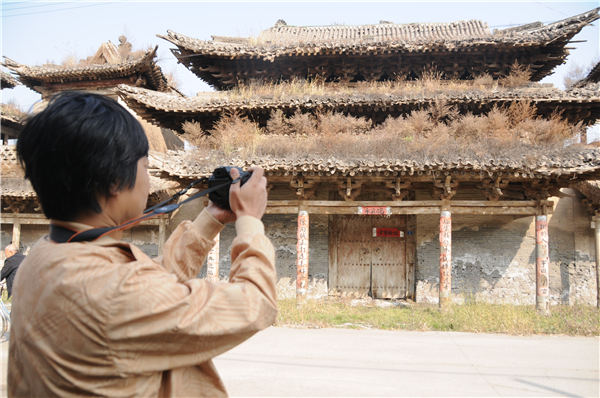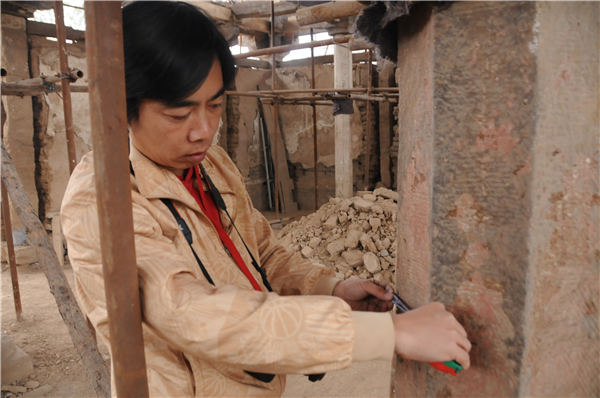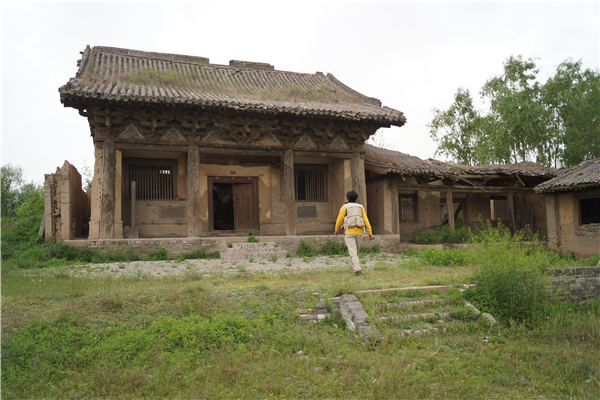Information
History lover uses camera to save abandoned historical sites

The dilapidated buildings in the villages of North China's Shanxi province appear to have no future. But to Tang Dahua, 48, they are "dying friends", and he wants to save them.
His photos tell their stories: an old temple is now a sheepfold hemmed in by piles of dung; an ancestral hall is overrun with weeds; a centuries-old wooden pagoda rots away; a collapsed theater has only three walls standing; frescoes in a damaged temple are heavily eroded.
Some are listed as cultural relics at the county level, but some are unknown even to locals.
Tang posted the photos on social media, arguing the buildings are cultural relics that are worthy of preservation before "they perish in the wild".
"In front of these buildings, you feel the smallness of humanity and the cruelty of time. You think something should be done," says Tang.
Tang has been taking pictures since 2006. He usually spends half a year seeking, researching and photographing pagodas, temples and other old sites in Shanxi, which is home to 452 relic sites under State-level protection and more than 28,000 ancient architectural sites-among the most in all of China's provincial regions.
He has crossed hills and rivers, and braved freezing cold and extreme heat, driving hundreds of kilometers from his home in Shandong province.
He has visited and photographed more than 400 long-neglected sites. And his Weibo social network project, Snapshots of Historical Sites, features more than 200 ancient buildings on the verge of collapse.
Tang says most of the information he gets is provided by travelers, cyclists and villagers.
"They have one thing in common-they love history."
An internet entrepreneur, Tang started the project in 2011, after he posted a series of photos of a wooden temple built more than 110 years ago.
"The dilapidated site shocked people," recalls Tang, who saw his photos to draw tens of thousands of hits and reposts in a day.
The project brought him 350,000 followers and he hopes that more relics can be survived with public attention.
A notable success was a decaying temple Longtian, which he found in 2014 in Xilianghe village, 16 kilometers from Pingyao county, a UNESCO world heritage site since 1997.

The temple had just a few wooden pillars standing.
And frescoes dating back to the Qing Dynasty (1644-1911) were weathered because of the poor condition of the roof.
Locals had no idea when the temple was built and abandoned. And they had no money to repair it.
But after Tang posted the pictures of the temple, it drew attention of hundreds of web users and other media, including the People's Daily, which published his pictures and called for protection of nearby relic sites.
Two months later, the local cultural relics bureau announced that restoration was underway.
In November 2015, a local told Tang the temple was restored and was hosting opera performances.
"Rural historical sites have regained respect and popularity," says Tang. "Historical sites are important because they are the platforms to display and protect intangible heritage, such as operas, temple fairs and ancient crafts. When historical buildings are saved, the culture revives."

More than 40 sites have been restored by local governments after Tang posted pictures. And he sometimes revisits places to see the restoration progress.
A major problem is that many historical buildings are not officially recognized as cultural relics. Some people or developers have dismantled, relocated or taken away parts of buildings to sell, without official approval.
"I hope our constant exposure of these crimes prompts local governments to intensify preservation efforts," says Tang.
Commenting on his work, a web user with the screen name "Jiandan" says: "I am touched by his passion. I hope more people join in to take care of the neglected historical sites."
Tang calls himself "Aiguta" online, which means "love pagoda".
His love for pagodas goes back 30 years to his high school days, when he read a book on Chinese pagodas.
But now, his passion covers more buildings.
Tang does not mind spending his money and time to save and study relics. "It's worth every moment," he says.
Category: English
News
Information
Key words:
